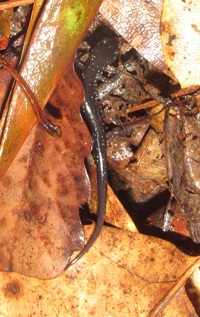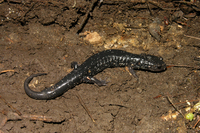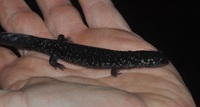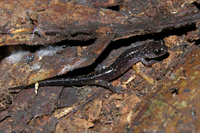|
|
|
|
|
|
|
|
Photo Gallery for Plethodon teyahalee - Southern Appalachian Salamander
| 7 photos are shown. |
 | Recorded by: B. Bockhahn, J. Thomson
Buncombe Co. |  | Recorded by: K. Bischof
Transylvania Co. |
 | Recorded by: Owen McConnell
Graham Co. |  | Recorded by: K. Bischof
Transylvania Co. |
 | Recorded by: K. Bischof
Transylvania Co. |  | Recorded by: Owen McConnell
Graham Co. |
 | Recorded by: Steve Hall, Nelson Hairston, Haven Wiley, UNC Vertebrate Ecology Class
Swain Co. |

 »
»

 »
»